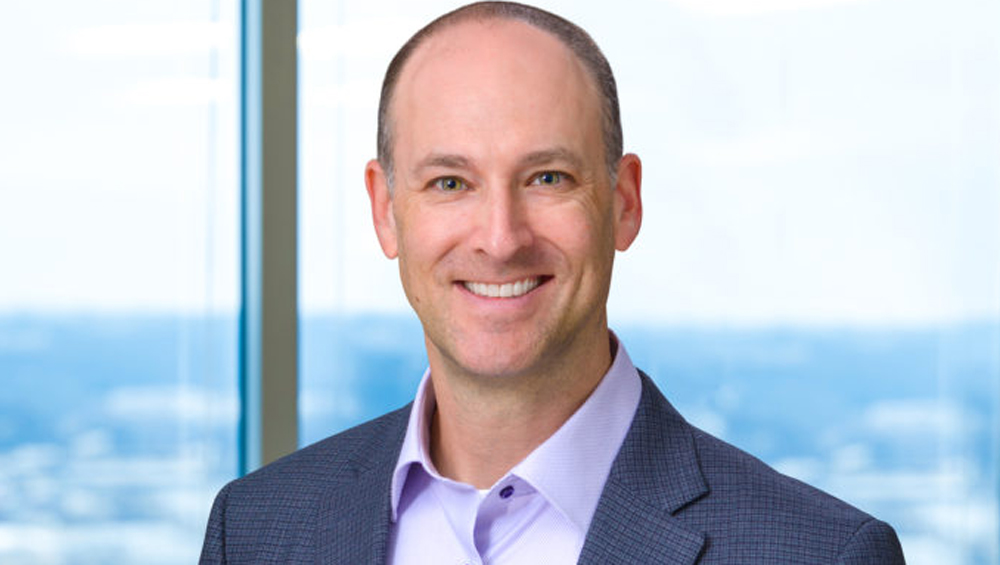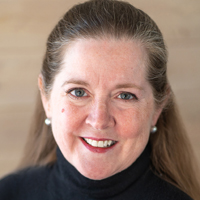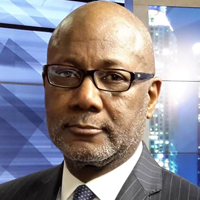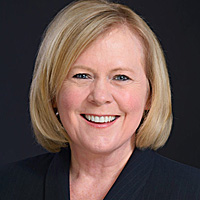
In Newsy — Now Scripps News — An Alternative To Cable News’ ‘Talk Radio’ Leanings

 It’s a safe bet to say that Newsy has followed a singular trajectory in the history of TV news. Its major plot points are askew, out of step with the path trod by its competitors. Almost everything about Newsy, which will be rebranded as Scripps News when the company launches a new national news division on Jan. 1, is unlikely, untrendy, nonconforming. And if it all works, it may just reboot the template for national news.
It’s a safe bet to say that Newsy has followed a singular trajectory in the history of TV news. Its major plot points are askew, out of step with the path trod by its competitors. Almost everything about Newsy, which will be rebranded as Scripps News when the company launches a new national news division on Jan. 1, is unlikely, untrendy, nonconforming. And if it all works, it may just reboot the template for national news.
Newsy is The E.W. Scripps Co.’s current national news network and probably the purest distillation of the company’s philosophy and practice of journalism. It is avowedly apolitical, widely geographically dispersed across the U.S. and driven by boots-on-the-ground reporting.
Look across its 16 hours of weekday daily programming and there’s nary a histrionic pundit in sight, nor any panels to chew over morsels of news like cud to fill airtime. In their place, there’s just reporting, context, facts and faces often flown over by larger, better resourced competitors.
 Scripps’ Newsy experiment, which has included deep investments and bold moves in programming and distribution, exemplifies its selection as TVNewsCheck’s Station Group of the Year for 2022 and offers a hopeful example of how national TV news might reaffirm some of its lost trust with viewers.
Scripps’ Newsy experiment, which has included deep investments and bold moves in programming and distribution, exemplifies its selection as TVNewsCheck’s Station Group of the Year for 2022 and offers a hopeful example of how national TV news might reaffirm some of its lost trust with viewers.
In its scrappy persistence, it could show cable networks a path back from polarization. And for broadcasters, it validates the persistent power of the airwaves even as audiences fracture ever more across streaming platforms.

Adam Symson
“When I think about what Newsy brings to the news landscape, it brings what we hear from consumers,” says Adam Symson, Scripps’ CEO and president. “They want a product that resonates with them.”
That resonance means seeing themselves in the product, Symson says. It also means stripping out any semblance of politics from the news being conveyed, especially as he sees democracy’s very future lying in the balance.
“I am very concerned with the way news has or has not been able to actually stem the challenges our democracy has faced over the last five or six years,” he says. “It’s critical for people to make informed decisions, especially in an environment where the cable news operations have fundamentally turned into talk radio.”
A Multipronged Revamp
Launched in 2008 in Columbia, Mo., in partnership with the Missouri School of Journalism, Newsy originally served up syndicated video news content to digital pureplays like Huffington Post. In 2014, it was acquired by Scripps, and its programming coalesced into more of a show structure.
Newsy was an early entrant into the OTT space among news networks and streaming soon became its dominant platform as programming was geared towards millennial consumers via a corps of young reporters and hosts. In 2017, Scripps expanded Newsy’s distribution to cable and satellite, taking over the former Retirement Living Television’s carriage agreements.
Newsy made its widest distribution expansion last October, when Scripps made it available on the over-the-air Ion Television stations it had acquired, along with carriage on Scripps stations that lacked an Ion sister station. That move brought Newsy to 95% of OTA households and on all major OTT and FAST platforms.
So, to recap: A digital video news pureplay morphed into an OTT news channel, which in turn evolved into a cable news network that also became an over-the-air network. Not your typical distribution flight plan.
But that OTA move was only part of a more expansive strategy for Newsy that also hit viewers in October 2021. Another major prong was its programming output.

Kate O’Brian
“Newsy went from creating two new hours of content a day to 15, 16 hours of new content a day,” says Kate O’Brian, head of network news for Scripps national networks. “We start at 6 in the morning, and we go all the way until midnight five days a week, then we have a couple of news shows and a lot of interstitial news breaks on the weekend.”
In anticipation of this expansion, Newsy relocated its headquarters to Atlanta, where it now shares a home with Scripps-owned Court TV. The new digs themselves also saw a major upgrade with a central newsroom, multiple offices and conference rooms, infrastructure, control rooms and two studios used by Newsy and Court TV. The project cost roughly $10 million.
In order to execute on its dramatic programming expansion, Newsy also saw a major staff-up. “We more than doubled the staff,” O’Brian says, indicating that number now hovers around 240. About 100 of them are in Atlanta, she says, with around 50 or 60 in Washington and a dozen more in Chicago. The rest are spread across the remainder of its 14 bureaus across the U.S., which range from a single multimedia journalist in some markets to clusters of a few people in others.
“The vision for Newsy was that we would be a national news organization that would be for the nation, covering this country all the way through and not just the coasts,” O’Brian says. “We created bureaus in places that we saw other news organizations had overlooked and we hired people in those locations who were from those locations. They knew the area, they had sources and they were able to do great stories.”
Executing Its Value Proposition
Most cable news networks elect to fill much of their time with panels and pundits, which are invariably cheaper than reports from the field. But Newsy has steadfastly refused to go that route, O’Brian says, electing instead to offer a steady supply of daily news.
That starts with the network’s four-hour Early Rush each morning, she says, which lays out continuous hard news in stories that are often then tracked throughout the day, buttressed with some repeat content and evergreen documentaries, “but basically we are live with news from 6 in the morning until 8 at night,” O’Brian says. That follows with a trio of shows, Newsy Tonight, In the Loop and The Why, that close out the weekday programming each night.
Producing that much ongoing news with a relatively small staff can require something akin to circular breathing, the technique wind instrument musicians adopt to produce a continuous tone without interruption. Applied to news, that means tasking managing editors with following the evolution of particular stories throughout the day and finding new guests and angles to take them forward so that the same details aren’t just repeated ad nauseum.

Eric Ludgood
It also means learning to hone both craft and logistics quickly, both of which Eric Ludgood, head of Newsy, says the organization has adapted to do.
“We learned some things about ourselves in terms of breaking news, and each time we did it we got better,” Ludgood says. “We are much more mature in some ways and much more nimble in a lot of ways than we were before, but we haven’t lost sight of the deep dive journalism that we want to do day in and day out.”
On the breaking news side, the school shooting in Uvalde, Texas, was a crucible for Newsy where its bureau structure made it well positioned to act quickly and surround the story. Newsy had a reporter and anchor on site within hours and immediately dug in for the long haul with multiple correspondents tackling it from different angles, making it a cornerstone of daily output.
“We got better at breaking news by not allowing it to be just a singular event, but it becomes part of the coverage,” Ludgood says. “We haven’t left that story. We want to be there for all of it.”
Newsy’s tack has evolved to lock in on a particular issue and blitz it with resources, such as a series on mental health in September that brought a dozen reporters in to contribute. But those same reporters also had to keep one eye on their day turn work, making burnout a constant worry.
Ludgood says he’s doing all he can to head that off as Newsy continues to find its daily footing. “We try to do the very best job possible of taking care of our folks,” he says. “If somebody has been travelling for two or three days and then we bring them back in, we try to give them a day in between. Our people work hard, but we are trying to make sure that they are not overworked.”
Newsy is partly able to mitigate against that by a strong collaborative structure with its sister entities within Scripps — the TV stations, Washington bureau, Denver-based national content team and Court TV. Content flows reciprocally in all directions stewarded by a partnership team within Newsy, Ludgood says.
“The partnership team is on the morning meetings and someone from the national team is one the morning meetings so we are able to know what content is available, and then we will work through the day to figure out how to parse that content, which also helps us to manage repetition,” he says.
At the same time, Newsy is also trying to manage a broader appeal to viewers beyond the younger demographic it had targeted for years. Partly that has meant a wider array of ages in front of and behind the news cameras, but also it has called for a reaffirmation of its nonpartisan approach to reporting.
“Our thought process at the beginning was there are lot of people who are not comfortable being at the ends of the spectrum, who are closer to the middle,” O’Brian says. “They want news that is more in the middle, and that has worked to our advantage.”
Measuring Success And Next Steps
Newsy has built something, but have people come to see it?

Lisa Knutson
A year after its reboot, the answer remains elusive, largely because the network still isn’t Nielsen rated. Lisa Knutson, president of Scripps Networks, says that was by design.
“My desire, at least for the first year, was to focus on building a network of the highest quality and we will be our own worst critics in terms of what quality really means,” Knutson says, adding that it will likely add Nielsen ratings by 2023.
In the meantime, there are digital and OTT metrics, although Newsy wouldn’t share any specifics. Ludgood would only allow that “the metrics we do get from the OTT platforms show people are watching more hours and watching longer when they watch.”
Knutson points to other KPIs showing Newsy’s progress, among them the fact that it was able to place a correspondent in the White House and a range of partnerships with outside news organizations it’s cultivating based on the quality of product it has been able to put out consistently over the past year.
Ludgood says he remains driven by key questions: “Do our shows look better every day? Are we elevating the kind of guest and analyst that we are putting on television? Are our anchors more engaging?”
And above all, he asks, has he cultivated the kind of organization where his staffers can comfortably bring their own criticisms and concerns forward?
“When they are comfortable enough to tell me what is not working in a constructive way, we have an environment that will allow us to improve,” Ludgood says. “If it is not working, we figure out how it is not working.”
Newsy will need that kind of constructive candor as it forges ahead with the additional original programming that O’Brian is eyeing for next year, let alone how it will tackle the upcoming midterm and presidential elections.
 But however unlikely its trajectory has been, Knutson says Newsy has come to a key moment, one that simultaneously puts it in an essential position in Scripps’ national networks strategy and delivers on the company’s steadfast devotion to news reported with integrity and relevance.
But however unlikely its trajectory has been, Knutson says Newsy has come to a key moment, one that simultaneously puts it in an essential position in Scripps’ national networks strategy and delivers on the company’s steadfast devotion to news reported with integrity and relevance.
Her only anxiety, she concedes, is insuring Newsy gets the eyeballs it needs to sustain.
“We have come 180 degrees in terms of the quality of creating a nearly 24/7 news service,” she says. “Now it’s like we are the best-kept secret.”
This is the third installment of a three-part series. Part one appeared Monday here and part two ran on Tuesday here.



































Comments (0)